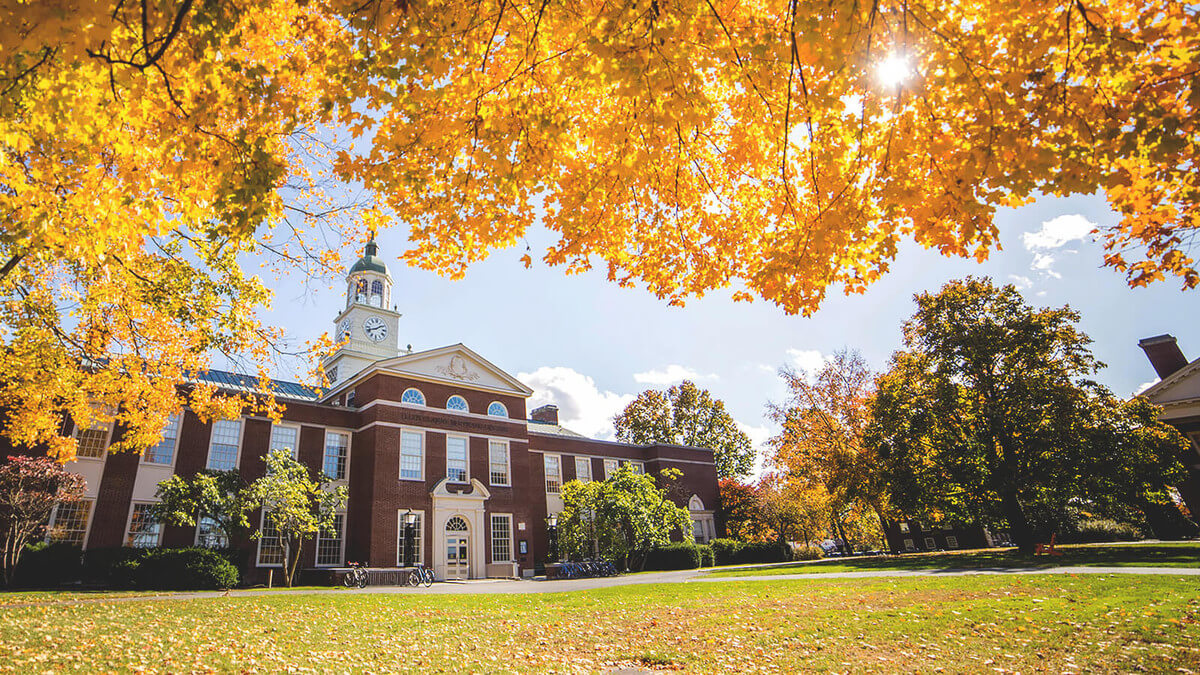Public Environmental History
in
a World of Wounds
A Virtual / Low-Carbon Workshop
Bucknell University | June 24-28, 2024

Theme
Public Environmental History in a World of Wounds highlights interdisciplinary, applied approaches to past and present environmental traumas, broadly defined. Here, environmental traumas include events typically regarded as “disasters” or “hazards” – drought, floods, wildfires, earthquakes, and heat waves. We also include harmful human-environmental relations deriving from the intersections of industrial capitalism, white supremacy, and settler colonialism: forced displacements, cancer clusters, red-lined neighborhoods, food deserts, sacrifice zones, and more.
Our climate emergency provides key contexts for engaging environmental trauma. Global climate change is intensifying hazards and harms across the planet, often layering them on top of each other. Learning how to mitigate their damage is central to equitable, livable futures. Building from traditions in memory studies and public humanities, naming these still-unfolding historical processes as environmental traumas – while holding space for understanding their differential impacts – can expand the public’s capacity for directing change. That is to say, actively narrating stories of loss as environmental history and environmental future allows communities to remember, connect, grieve, and envision processes for transformation that are attuned to their goals.
We are eager to discuss concepts, methods, and cases for scholarly work with and for communities seeking change. Now, more than ever, there is a global public acutely aware of both the wounds society faces and the possibilities of radical resilience and revolution. To take a recent example, the uprisings for civil rights and climate justice over the last five years evince publics organized at the community level and connecting the dots among corporate greed, structural violence, and environmental destruction. This collective action inspires us to think critically about how trauma, public memory, environmental history, and collective action inform one another.
Participants
These scholars and artists will come together to exchange viewpoints on environmental history, public scholarship, environmental trauma, and collective action.
Ayodeji Adegbite – Core Participant
Ayodeji Adegbite is a Ph.D. candidate in the Program in the History of Science, Medicine, and Technology in the Department of History at the UW-Madison. His research interests include the history of medicine, science, global health, and the environment, with a focus on colonial and post-colonial Africa.
Ligia Arguilez – Core Participant
Ligia Arguilez earned her PhD in Borderlands History in August (2023) from the University of Texas, El Paso. Her work highlights the stories and legacies of U.S.-Mexico fronterizx communities by centering people, place, and nature in the desert borderlands.
George Ferrandi – Collaborator
George Ferrandi is an American artist whose performance, installation and participatory projects address issues of vulnerability, impermanence, fallibility and spectacle, often through experimental approaches to narrative.
Elena Gonzales, PhD – Collaborator
Elena Gonzales, PhD, is Curator of Civic Engagement & Social Justice at the Chicago History Museum where she is curating Aquí en Chicago (2025), an exhibition that celebrates the historically persistent cultural presence of Latine communities in Chicago–from creating thriving Latine communities to proud displays of cultural heritage, to public actions to abolish white supremacy.

Alex Jania – Core Participant
Alex Jania is a historian of disaster, global memory culture, and modern Japan in the world. Alex’s work sits at the intersection of environmental history, memory studies, and transnational history and seeks to understand how people have used memory practices to make sense of their relationship to past, present, and future environmental hazards.
Anna Lehr Mueser – Core Participant
Anna Lehr Mueser (she/her) is a PhD candidate in the History and Sociology of Science. Her work explores the intersections of collective memory, vernacular knowledge, and watershed management and development in the twentieth century United States.
Andrew Stuhl – Core Participant/Facilitator
Andrew Stuhl is Associate Professor and Chair of Environmental Studies and Sciences at Bucknell University. As an environmental historian, Prof. Stuhl’s teaching and scholarship investigate the relationship of people and the environment over the last two centuries, with a focus on North America.
Gerard Stropnicky – Collaborator
Gerard Stropnicky is in his 51st year as a multi-faceted theatre professional. By invitation, he’s entered into communities from Appalachia to Uganda where he weaves local story into projects that celebrate, challenge, and address intractable issues.
Participants’ Work
Ayodeji Adegbite
My paper examines research into African indigenous medicine and medicinal herbs by colonial authorities as a window to explore the biomedical and environmental history of pharmaceutical prospecting and its ties to other forms of colonial resource extraction. What similarities and differences emerged in the extraction of medicinal plants, compared to colonial extraction of other resources, including minerals, fossil fuels, and timber? Recently, extractivism has emerged as a key element in understanding the planetary ecological crises of the Anthropocene. In addition to bio-extraction this research will also examine how ideas about health, medicine, land and environment were transformed in the forest regions of Nigeria.
Ligia Arguilez
The trauma of conquest and settler colonialism is written on the lands and bodies of the U.S.- Mexico border. Rather than an event of the past, colonialism, its features, and historical processes, is a continuous event enacted on desert lands and peoples for more than four centuries. Its cultural, geopolitical, and environmental consequences represent what has been aptly called an “open wound.” This work looks to a common desert shrub, Larrea tridentata or the creosote bush, and its relations with desert people over time, to examine the metaphorical and material forms of healing in such a wounded place as the border. Through listening to memories evoked with the plant, we learn about the co-creation of place and of healing as a cultural partnership between nature and people in place.
George Ferrandi
The story I’m engaging is the fictional one told by rapacious industry over and over again in this region of central Pennsylvania for the last 150 years; the same story that briefly boomed and less briefly busted this region and contaminated its lifeblood, the Susquehanna River, through the avaricious industrialization—first of logging, then coal, then industrial farming, then pharmaceuticals. It’s a true crime novel disguised as a fantasy about non-existent jobs and sparkling futures. The antagonist in the latest chapter of this serial is Encina, a Texas-based corporation plotting to build a plastics pyrolysis plant on the floodplain of the river. It’s a familiar story about everyday people fighting to protect their families and their futures, but this time they’re trying to prevent history—specifically, a tragic environmental history—from repeating itself.
Elena Gonzales
As the curator of Aquí en Chicago at Chicago History Museum (opening October 2025), I’m sharing environmental histories relating to the Latine population in and around Chicago. The experiences of Latine neighborhoods in Chicago attest to the ways in which communities of color and poor communities bear the environmental risks for the whole city and – when we consider manufacturing and exports – for the country as well. Communities that refuse environmental injustice or seek remediation are examples that lead the way toward a sustainable path. Stories of environmental restoration at Steelworkers’ Park and Big Marsh help temper the challenging examples above as does the Chicago branch of the Landless movement.
Alex Jania
My essay tells the history of a memorial organization aptly named the Kizuna Project, to understand how public history and memory can help forge connection in the wake of environmental trauma. The Kizuna Project was a Chicago-based memorial project centered on annual commemorative photo exhibitions that featured images and stories of 3.11, disaster survivors, and the state of recovery in the Tohoku region (Japan) from 2011-2021. I analyze the Kizuna Project as a work of public history to highlight how history and memory can help forge powerful connections in the wake of environmental trauma. I introduce the term “disaster solidarity” to illuminate the connections that public history can help make possible following disaster.
Anna Lehr Mueser
Although infrastructure development is commonly understood as a public good, the process and aftermath of such development is a more ambiguous majer. In this paper, I explore the tension between public good and immediate experiences of infrastructural development in the rural Catskill Mountains of New York. During the first two-thirds of the twentieth century, New York City developed six large reservoirs in the Catskill Mountains, yet their construction erased more than 20 small villages and hamlets, displacing residents, their businesses, and their farms. These ruptures have echoed through the generations, forming a set of collective memories about places and lifeways lost to the development of New York City’s water supply infrastructure.
Andrew Stuhl
A decade ago, anthropologist Cathy Stanton called out a tension simmering under public environmental history. Scholars in this field held themselves to the highest standards of care and rigor in research. But, she said, the scope of their work – in pace, ambition, or impact – had not fully reflected that “we are in fact in the midst of an emergency” (“Introduction: A Good Enough Platform for Change,” 2014, p 3). In 2024, a new generation of public and environmental historians is poised to take up the mantle. We are developing new directions for public environmental history: principles, concepts, and methods to guide us forward. In a world of wounds, engaged scholarship has the potential to repair past harms, ensure equity and wellbeing now, and bring into being a future that is better for all.
Gerard Stropnicky
In unexpected American places, artists are using their work to explore, illuminate, and engage the world around them, making art with goals of promoting community engagement, civic engagement, and social change. In my work with community-engaged artists in the early 2000s, common core values began to emerge, values that underpin creative work that most effectively transforms, revitalizes, and renews communities in distress. We’ve tried many terms; I propose seven —Agency, Authenticity, Artistry, Accuracy, Audacity, Audience and Accessibility. These provide a framework for planning, making and assessing work that aims to actually bring changes in attitude, in policy, and positive social change.
Funding and Support
Public Environmental History in a World of Wounds is made possible by the David and Patricia Ekedahl Fund and the Bucknell Humanities Center. We also thank Bucknell’s Library and Information Technology group for support on event logistics.